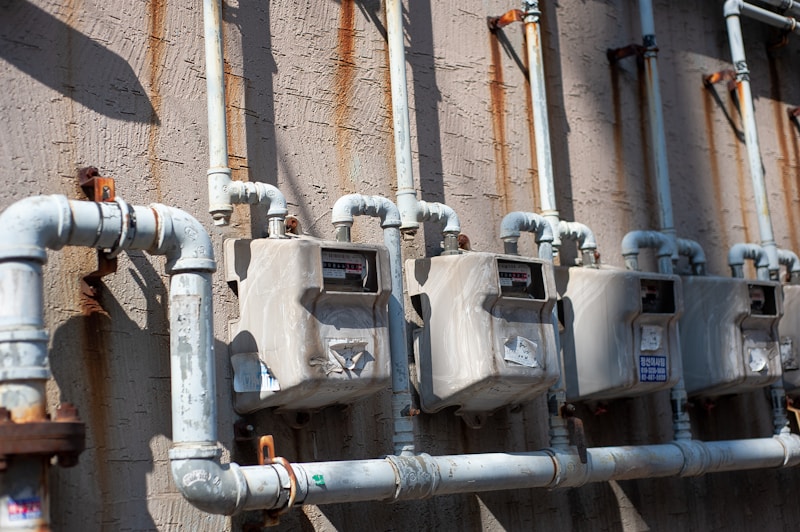9 Questions
What is plumbing?
What is the importance of plumbing infrastructure in developed countries?
What is the difference between plumbers, boilermakers, and pipefitters?
When did plumbing originate?
What were the first clay sewer pipes used for and by whom were they introduced?
What were the advantages of plumbing in ancient Rome?
What is the most commonly tracked bacteria found in premises plumbing systems?
What is the governing body for plumbing regulation in Australia?
What are some widely used plumbing standards in the US?
Summary
Systems for Conveying Fluids: A Summary
-
Plumbing is a system that conveys fluids through pipes, valves, and other apparatuses for various applications such as heating and cooling, waste removal, and water delivery.
-
Plumbing infrastructure is crucial for public health and sanitation in developed countries.
-
Boilermakers and pipefitters work with piping but are not plumbers.
-
Plumbing originated in ancient civilizations as public baths were developed and potable water and wastewater removal were needed.
-
The first clay sewer pipes were introduced by the Mesopotamians around 4000 BCE, while copper piping appeared in Egypt around 2400 BCE.
-
Plumbing reached its apex in ancient Rome with the introduction of expansive aqueducts, tile wastewater removal, and widespread use of lead pipes.
-
Plumbing stagnated after the fall of Rome until the growth of modern cities in the 1800s when public health authorities began pushing for better waste disposal systems.
-
Most large cities today pipe solid wastes to sewage treatment plants for partial purification before emptying into water bodies.
-
Galvanized iron piping was commonplace in the US until 1960, after which copper piping became a safer alternative to lead pipes.
-
Water pipes are made of plastic or metal and carry pressurized and treated fresh water to buildings.
-
Plumbing materials include steel, copper, plastic, and cast iron with each having its advantages and disadvantages.
-
Plumbing fixtures are exchangeable devices that use water and include water closets, urinals, showers, bathtubs, sinks, and fountains.Plumbing Tools, Problems, Regulations, and Standards: A Summary
-
Plumbers require specialized tools for complex jobs, such as pipe wrenches, flaring pliers, pipe vise, pipe bending machine, pipe cutter, dies, and joining tools.
-
New tools, such as video cameras for inspections, hydro jets, and high-pressure hydraulic pumps, help plumbers fix problems more efficiently.
-
Flooding from excessive rain or clogged sewers may require specialized equipment, such as a heavy-duty pumper truck designed to vacuum raw sewage.
-
Bacteria can live in "premises plumbing systems", which refer to the "pipes and fixtures within a building that transport water to taps after it is delivered by the utility".
-
Legionella pneumophila, Mycobacterium avium, and Pseudomonas aeruginosa are the most commonly tracked bacteria, which people with depressed immunity can inhale or ingest and become infected with.
-
Plumbing work in populated areas is regulated by government or quasi-government agencies to ensure safe, quality construction and protect public health, safety, and welfare.
-
In Australia, the national governing body for plumbing regulation is the Australian Building Codes Board, responsible for the creation of the National Construction Code.
-
In Norway, new domestic plumbing installed since 1997 must be easily accessible for replacement after installation, leading to the development of the pipe-in-pipe system.
-
In the UK, the professional body is the Chartered Institute of Plumbing and Heating Engineering; the trade remains virtually ungoverned, and no systems are in place to monitor or control the activities of unqualified plumbers.
-
In the US, plumbing codes and licensing are generally controlled by state and local governments, and the Environmental Protection Agency has set guidelines about what constitutes lead-free plumbing fittings and pipes.
-
Some widely used plumbing standards in the US are the Uniform Plumbing Code, International Plumbing Code, and National Standard Plumbing Code.
-
Health Aspects of Plumbing (HAP) published jointly by the World Health Organization (WHO) and the World Plumbing Council (WPC) addresses health and safety issues related to plumbing.
Description
Test your knowledge on the history, tools, regulations, and health aspects of plumbing with our Systems for Conveying Fluids quiz. From ancient civilizations to modern developments, learn about the evolution of plumbing and the specialized tools required for complex jobs. Understand the regulations and standards that govern plumbing work in different countries and their importance in ensuring safe and quality construction. Lastly, delve into the health aspects of plumbing and the potential risks associated with bacteria in premises plumbing systems. Take the quiz now to see how much


